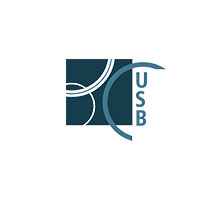Naendrup, Jan-Hendrik, Jorge, Garcia Borrega, Alexander, Eichenauer Dennis, Alexander, Shimabukuro-Vornhagen, Matthias, Kochanek and Boris, Boll . Reactivation of EBV and CMV in Severe COVID-19-Epiphenomena or Trigger of Hyperinflammation in Need of Treatment? A Large Case Series of Critically ill Patients. J. Intensive Care Med.. THOUSAND OAKS: SAGE PUBLICATIONS INC. ISSN 1525-1489
Full text not available from this repository.Abstract
Background Reactivation of viruses such as Epstein-Barr virus (EBV) and cytomegalovirus (CMV) are common in critically ill patients and have been described in patients with severe COVID-19. However, it is unclear whether these reactivations are associated with increased mortality and whether targeted treatments are beneficial. Methods In a retrospective single-center cohort study, patients with severe COVID-19 treated on our intensive care unit (ICU) were screened for EBV and CMV reactivation as detected by polymerase chain reaction. If present, patient characteristics, temporal connections to severe acute respiratory syndrome coronavirus 2 diagnosis and corticosteroid use, the use of targeted treatments as well as the course of disease and outcome were analyzed. As control group, non-COVID-19 patients with sepsis, treated within the same time period on our ICU, served as control group to compare incidences of viral reactivation. Results In 19 (16%) of 117 patients with severe COVID-19 treated on our ICU EBV reactivations were identified, comparable 18 (14%) of 126 in the non-COVID-19 control group (P = .672). Similarly, in 11 (9%) of 117 patients CMV reactivations were identified, comparable to the 16 (13%) of 126 in the non-COVID-19 sepsis patients (P = .296). The majority of EBV (58%) and CMV reactivations (55%) were detected in patients under systemic corticosteroid treatment. 7 (37%) of 19 patients with EBV reactivation survived the ICU stay, 2 (29%) of 7 patients with rituximab treatment and 5 (42%) of 12 patients without treatment (P = .568). Five (50%) of 10 patients with CMV reactivation survived the ICU stay, 5 (83%) of 6 patients with ganciclovir treatment and 0 of 4 patients without treatment (P = .048). Follow-up analysis in these patients showed that the initiation of treatment lead to decrease in viral load. Conclusion Critically ill patients with COVID-19 are at a high risk for EBV and CMV reactivations. Whether these reactivations are a cause of hyperinflammation and require targeted treatment remains uncertain. However, in patients with clinical deterioration or signs of hyperinflammation targeted treatment might be beneficial and warrants further studying.
| Item Type: | Journal Article | ||||||||||||||||||||||||||||
| Creators: |
|
||||||||||||||||||||||||||||
| URN: | urn:nbn:de:hbz:38-566007 | ||||||||||||||||||||||||||||
| DOI: | 10.1177/08850666211053990 | ||||||||||||||||||||||||||||
| Journal or Publication Title: | J. Intensive Care Med. | ||||||||||||||||||||||||||||
| Publisher: | SAGE PUBLICATIONS INC | ||||||||||||||||||||||||||||
| Place of Publication: | THOUSAND OAKS | ||||||||||||||||||||||||||||
| ISSN: | 1525-1489 | ||||||||||||||||||||||||||||
| Language: | English | ||||||||||||||||||||||||||||
| Faculty: | Unspecified | ||||||||||||||||||||||||||||
| Divisions: | Unspecified | ||||||||||||||||||||||||||||
| Subjects: | no entry | ||||||||||||||||||||||||||||
| Uncontrolled Keywords: |
|
||||||||||||||||||||||||||||
| URI: | http://kups.ub.uni-koeln.de/id/eprint/56600 |
Downloads
Downloads per month over past year
Altmetric
Export
Actions (login required)
 |
View Item |
